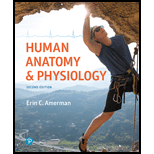
Pearson eText Human Anatomy & Physiology -- Instant Access (Pearson+)
2nd Edition
ISBN: 9780136873822
Author: Erin Amerman
Publisher: PEARSON+
expand_more
expand_more
format_list_bulleted
Question
Chapter 5.5, Problem 3QC
Summary Introduction
To review:
The factors that influence the hair color and texture.
Introduction:
The hair are present on almost all the regions of the body. Some of these body hair are soft while some have a coarse presentation. Some hair are darker inshade while some are faint in color. There are several factors that differentiate the color and texture of the hair.
Expert Solution & Answer
Want to see the full answer?
Check out a sample textbook solution
Students have asked these similar questions
students in a science class investiged the conditions under which corn seeds would germinate most successfully. BAsed on the results which of these factors appears most important for successful corn seed germination.
I want to write the given physician orders in the kardex form
Amino
Acid Coclow
TABle
3'
Gly
Phe
Leu
(G)
(F) (L)
3-
Val
(V)
Arg (R)
Ser (S)
Ala
(A)
Lys (K)
CAG
G
Glu
Asp (E)
(D)
Ser
(S)
CCCAGUCAGUCAGUCAG
0204
C
U
A G
C
Asn
(N)
G
4
A
AGU
C
GU
(5)
AC
C
UGA
A
G5
C
CUGACUGACUGACUGAC
Thr
(T)
Met (M)
lle
£€
(1)
U
4
G
Tyr
Σε
(Y)
U
Cys (C)
C
A
G
Trp (W) 3'
U
C
A
Leu
בוט
His
Pro
(P)
££
(H)
Gin
(Q)
Arg
흐름
(R)
(L)
Start
Stop
8. Transcription and Translation Practice: (Video 10-1 and 10-2)
A. Below is the sense strand of a DNA gene. Using the sense strand, create the antisense
DNA strand and label the 5' and 3' ends.
B. Use the antisense strand that you create in part A as a template to create the mRNA
transcript of the gene and label the 5' and 3' ends.
C. Translate the mRNA you produced in part B into the polypeptide sequence making sure
to follow all the rules of translation.
5'-AGCATGACTAATAGTTGTTGAGCTGTC-3' (sense strand)
4
Chapter 5 Solutions
Pearson eText Human Anatomy & Physiology -- Instant Access (Pearson+)
Ch. 5.1 - 1. What are the major structures of the skin, and...Ch. 5.1 - 2. How does the integument provide protection...Ch. 5.1 - Prob. 3QCCh. 5.1 - What are the other functions of the integument?...Ch. 5.2 - 1. What are the five strata of the epidermis? How...Ch. 5.2 - How does a keratinocyte that begins its life in...Ch. 5.2 - Prob. 3QCCh. 5.2 - Prob. 4QCCh. 5.3 - Which type of tissue makes up the papillary layer...Ch. 5.3 - What are the functions of the dermal papillae?
Ch. 5.3 - 3. Which type of tissue makes up the reticular...Ch. 5.3 - 4. What other structures are located in the...Ch. 5.3 - 5. How does the papillary layer of the dermis...Ch. 5.3 - What causes tension lines and flexure lines? How...Ch. 5.4 - How is melanin produced, and how does it interact...Ch. 5.4 - What are the functions of melanin?Ch. 5.4 - 3. What is carotene, and what color does it give...Ch. 5.4 - Prob. 4QCCh. 5.4 - 5. How can the oxygen content of the blood affect...Ch. 5.4 - 6. What is cyanosis, and what can it tell us...Ch. 5.5 - How do the hair shaft and hair root differ?Ch. 5.5 - How does a hair grow in length?Ch. 5.5 - Prob. 3QCCh. 5.5 - Define the following terms: nail bed, nail plate,...Ch. 5.5 - How does nail growth occur?Ch. 5.5 - Prob. 6QCCh. 5.5 - What are the other three types of sweat glands,...Ch. 5.5 - 8. How do sebaceous glands and sebum differ from...Ch. 5.6 - Prob. 1QCCh. 5.6 - Prob. 2QCCh. 5.6 - What is cancer?Ch. 5.6 - 4. How do the three types of skin cancer differ?
Ch. 5 - Explain why the skin is an organ.Ch. 5 - Which of the following correctly describes the...Ch. 5 - Which of the following is not a function of the...Ch. 5 - 4. Explain what happens to dermal blood vessels...Ch. 5 - Number the strata of thick skin epidermis from...Ch. 5 - Keratinocytes in the superficial strata of the...Ch. 5 - Mark the following statements as true or false. If...Ch. 5 - Which of the following statements is false? a....Ch. 5 - What are the functions of the dermal papillae?Ch. 5 - Epidermal ridges are created by: a. the epidermal...Ch. 5 - 11. Mark the following statements as true or...Ch. 5 - 12. Which of the following is not a function of...Ch. 5 - 13. Fill in the blanks: The portion of the hair...Ch. 5 - Nail growth occurs when: a. cells in the nail...Ch. 5 - Prob. 15CYRCh. 5 - Match each type of gland with its correct...Ch. 5 - How do sweat and sebum differ?Ch. 5 - 18. Which type of burn involves the epidermis and...Ch. 5 - 19. The type of skin tumor that involves the...Ch. 5 - Prob. 1CYUCh. 5 - Prob. 2CYUCh. 5 - The hair and nails are sometimes called accessory...Ch. 5 - 1. You are working in the emergency department...Ch. 5 - 2. After Ramon’s skin came into contact with a...Ch. 5 - 3. Which of the following is not a function of...Ch. 5 - 4. What would happen to the skin if the oil...Ch. 5 - Many antiaging skin creams contain collagen and...Ch. 5 - 6. Would a mild second-degree burn be likely to...
Knowledge Booster
Similar questions
- What is the structure and function of Eukaryotic cells, including their organelles? How are Eukaryotic cells different than Prokaryotic cells, in terms of evolution which form of the cell might have came first? How do Eukaryotic cells become malignant (cancerous)?arrow_forwardWhat are the roles of DNA and proteins inside of the cell? What are the building blocks or molecular components of the DNA and proteins? How are proteins produced within the cell? What connection is there between DNA, proteins, and the cell cycle? What is the relationship between DNA, proteins, and Cancer?arrow_forwardWhy cells go through various types of cell division and how eukaryotic cells control cell growth through the cell cycle control system?arrow_forward
- In one paragraph show how atoms and they're structure are related to the structure of dna and proteins. Talk about what atoms are. what they're made of, why chemical bonding is important to DNA?arrow_forwardWhat are the structure and properties of atoms and chemical bonds (especially how they relate to DNA and proteins).arrow_forwardThe Sentinel Cell: Nature’s Answer to Cancer?arrow_forward
- Molecular Biology Question You are working to characterize a novel protein in mice. Analysis shows that high levels of the primary transcript that codes for this protein are found in tissue from the brain, muscle, liver, and pancreas. However, an antibody that recognizes the C-terminal portion of the protein indicates that the protein is present in brain, muscle, and liver, but not in the pancreas. What is the most likely explanation for this result?arrow_forwardMolecular Biology Explain/discuss how “slow stop” and “quick/fast stop” mutants wereused to identify different protein involved in DNA replication in E. coli.arrow_forwardMolecular Biology Question A gene that codes for a protein was removed from a eukaryotic cell and inserted into a prokaryotic cell. Although the gene was successfully transcribed and translated, it produced a different protein than it produced in the eukaryotic cell. What is the most likely explanation?arrow_forward
arrow_back_ios
SEE MORE QUESTIONS
arrow_forward_ios
Recommended textbooks for you
 Human Biology (MindTap Course List)BiologyISBN:9781305112100Author:Cecie Starr, Beverly McMillanPublisher:Cengage Learning
Human Biology (MindTap Course List)BiologyISBN:9781305112100Author:Cecie Starr, Beverly McMillanPublisher:Cengage Learning Anatomy & PhysiologyBiologyISBN:9781938168130Author:Kelly A. Young, James A. Wise, Peter DeSaix, Dean H. Kruse, Brandon Poe, Eddie Johnson, Jody E. Johnson, Oksana Korol, J. Gordon Betts, Mark WomblePublisher:OpenStax College
Anatomy & PhysiologyBiologyISBN:9781938168130Author:Kelly A. Young, James A. Wise, Peter DeSaix, Dean H. Kruse, Brandon Poe, Eddie Johnson, Jody E. Johnson, Oksana Korol, J. Gordon Betts, Mark WomblePublisher:OpenStax College Nutrition Through The Life CycleHealth & NutritionISBN:9781337919333Author:Brown, Judith E.Publisher:Cengage Learning,
Nutrition Through The Life CycleHealth & NutritionISBN:9781337919333Author:Brown, Judith E.Publisher:Cengage Learning,



Human Biology (MindTap Course List)
Biology
ISBN:9781305112100
Author:Cecie Starr, Beverly McMillan
Publisher:Cengage Learning

Anatomy & Physiology
Biology
ISBN:9781938168130
Author:Kelly A. Young, James A. Wise, Peter DeSaix, Dean H. Kruse, Brandon Poe, Eddie Johnson, Jody E. Johnson, Oksana Korol, J. Gordon Betts, Mark Womble
Publisher:OpenStax College


Nutrition Through The Life Cycle
Health & Nutrition
ISBN:9781337919333
Author:Brown, Judith E.
Publisher:Cengage Learning,